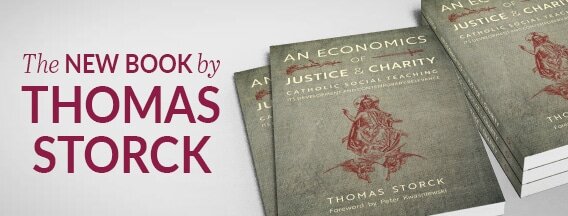To Proclaim Christ to All Peoples and Nations
The first half of the 20th century is arguably the golden age of Catholic social thought. From Fr. Joseph Husslein in the United States to G.K. Chesterton in England, Catholics labored to build upon the foundations of Pope Leo XIII’s encyclical, Rerum Novarum. In those years, it was common for priests and bishops to preach sermons on “the social question” caused by “the spirit of revolutionary change”—a cultural, political, and economic shift away from the Christian social order that swallowed what was once Christendom. Although by most accounts Catholicism thrived in the mid-century, in 1962 St. John XXIII opened the Second Vatican Council amidst a gradual decline from which the faith has not recovered to this day. Many critics today blame aggiornamento—an “updating” of the Church to meet the demands of the modern world—for weakening the Catholic religion. Whether or not this is the case is debatable, but there is little doubt that catechesis was the first casualty of the post-conciliar era; not only the faith as a whole but also our understanding of the Christian social order. Compared with their great-grandparents, many Catholics today cannot articulate whether their religious beliefs are harmonious with the political positions they hold.
If statistics are right most do not bother to find out. According to Pew Research, today about 73% of Catholics in the United States “say they look inward for [moral] guidance in their lives” while only 21% turn to the teachings of the Church. 72% believe the Church has the power to allow the faithful to utilize artificial methods of birth control. 42% say there is nothing sinful about buying luxuries instead of giving to the poor, and 73% justify purchasing homes that are bigger than any family really needs. The late Dr. Willam A. Marra might have humorously brushed aside these polls as mere gossip, but we cannot ignore these astonishing figures in light of the flags of optimism that continue to be waived by chanceries in the post-conciliar world.
To reverse course, Pope St. John Paul II called upon the faithful to breathe life into a New Evangelization that would bring about a “sowing of the Gospel,”[note]John Paul II, Redemptoris missio, 7 December 1990.[/note] insisting upon the need for a “proclamation of the Church’s social doctrine”.[note]John Paul II, Centesimus Annus, no. 5.[/note] Although his efforts resulted in a promising uptick of faith formation in the decades to come, the social doctrine component of catechetical instruction continued to suffer neglect, sealing its reputation as the “best kept secret” of the faith.
Thomas Storck wants to change that.
Storck’s impeccable reputation has earned him a following for more than three decades. A veteran of Catholic publications, his articles have appeared in popular magazines and websites, including New Oxford Review, New Blackfriars, Homiletic and Pastoral Review, Caelum et Terra, Ethika Politika, and The Distributist Review. His books include The Catholic Milieu, Foundations of a Catholic Political Order, and From Christendom to Americanism and Beyond: The Long, Jagged Trail to a Postmodern Void.
Storck’s latest release, An Economics of Justice & Charity: Catholic Social Teaching, Its Development and Contemporary Relevance is arguably his greatest achievement. As the title suggests, An Economics of Justice & Charity is designed as an exposition of the development of Catholic social thought, specifically, the economic questions that arose due to “capitalism, socialism, and industrialism, all of which have introduced new ideas and new ways of living into human affairs”. Placing the encyclicals in historical context and utilizing primary sources, Storck guides readers through this body of teaching and shines a light on the urgent need to familiarize ourselves with it today.
In his book, Storck avoids the mistakes often made by his contemporaries; errors that have come to characterize the way the social teachings are presented. First, he never presumes readers are familiar with these teachings, therefore the book is accessible to the person in the pew. Second, Storck distinguishes himself from other authors by not placing contemporary policy questions at the forefront of this study. Today’s policy debates center on immigration, gun control, transgenderism, and embryonic stem cell research. Tomorrow our children will be forced to contend with other issues like human cloning, artificial intelligence, and new sexual “freedoms”. If it is true that paint needs primer, then understanding the underlying principles behind Church teaching will help us grapple with the practical implications made by any threat to the right ordering of society.
Part of this familiarization requires us to study why Pope Leo XIII issued Rerum Novarum. In the first place, the Enlightenment’s assault on the political order compelled the Church to renew confidence in Her ability to undo the damage wrought by Liberalism. Turning its gaze from politics to economics, Liberalism sought a marketplace free from the Church’s moral restraint, reduced the State to a mere “policeman,” and allowed the rich to lay upon “the laboring poor a yoke little better than that of slavery itself”.[note]Leo XIII, Rerum Novarum, no. 3.[/note] The Church’s response to these evils was to paint a picture, as Storck puts it, “[of] a world remade on Christian principles”.
But not everyone welcomed such a portrait. Some opposed Pope Leo’s efforts to challenge the powerful tentacles of Liberalism. Rerum Novarum was “held suspect by some, even among Catholics”.[note]Pius XI, Quadragesimo Anno, no. 14.[/note] Time has not been generous. This doctrine, Storck writes, remains a stumbling block for generations “raised and formed in a milieu in which we receive what we call either liberal or conservative ideas,” leading many souls into the arms of Moloch and Mammon.
How do we remove our ideological shackles today? How should we approach these teachings of the Church?
Storck provides the answer.
When we come upon statements from the Church’s Magisterium dealing with economic questions, there is a human tendency to look for those statements that tend to support what we already believe and to overlook or explain away those that do not…. If we hope to form our intellects according to the mind of the Church on socio-economic questions, then we must discard both conservative and liberal perspectives in order to learn how to think with the Church.
An Economics… wraps up with a magnificent epilogue devoted to Christ the King, one that unmistakably situates the purpose of this doctrine in the life of our faith:
We must raise the banner of Jesus Christ the King, and proclaim him as king of nations and peoples, king of individuals, king of every aspect of human life. This is the ultimate aim of social doctrine.
With a foreword by the renowned writer Dr. Peter Kwasniewski, An Economics of Justice & Charity is exemplary in its ability to unpack the social teachings and challenge Catholics to deepen their knowledge of the social doctrine of the Church. This masterful book written by Thomas Storck should be placed in the hands of every prelate, priest and religious, and every layperson who wants to know, or think they know, the social doctrine of the Church.
To purchase the book, click here.


